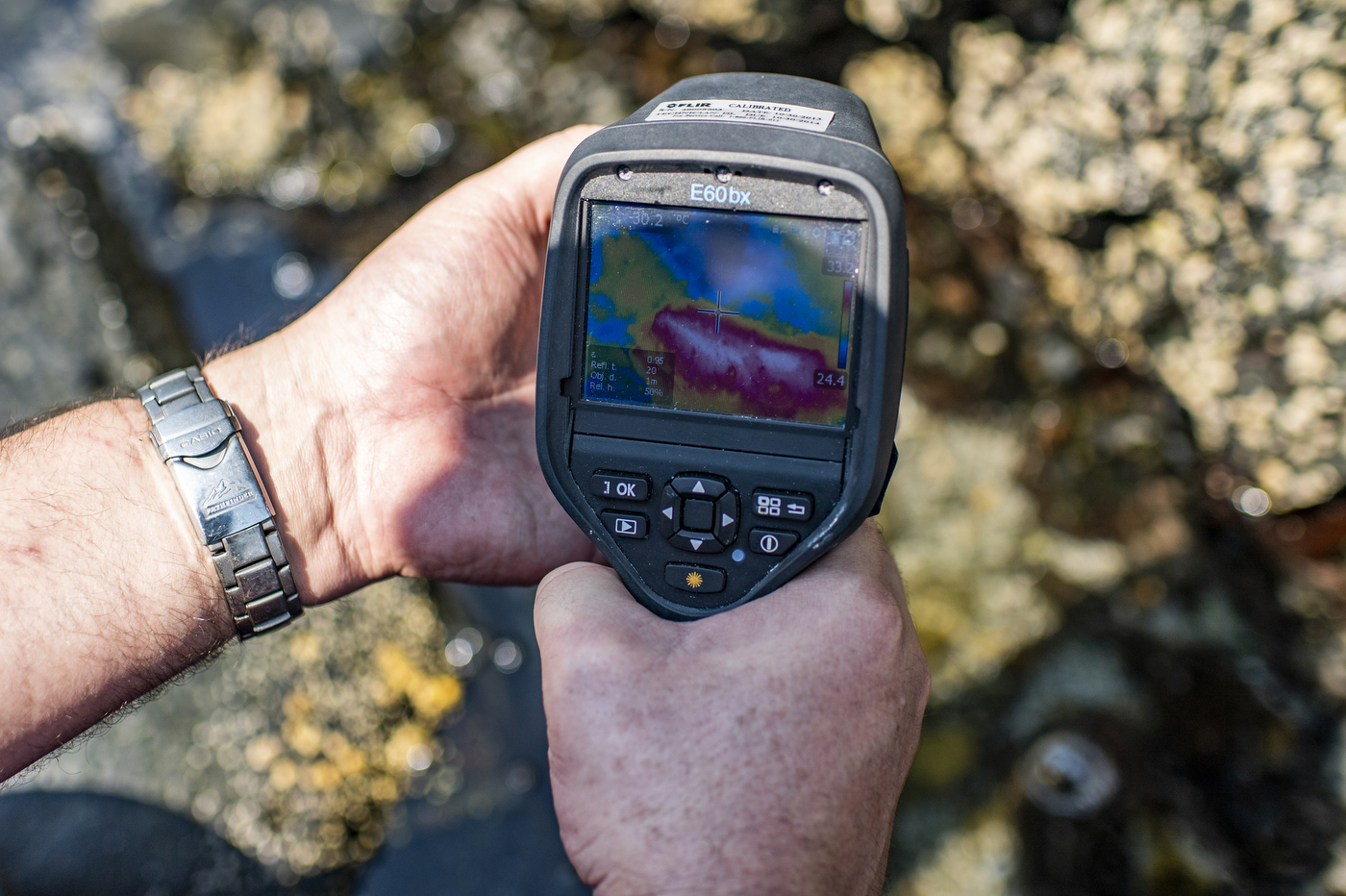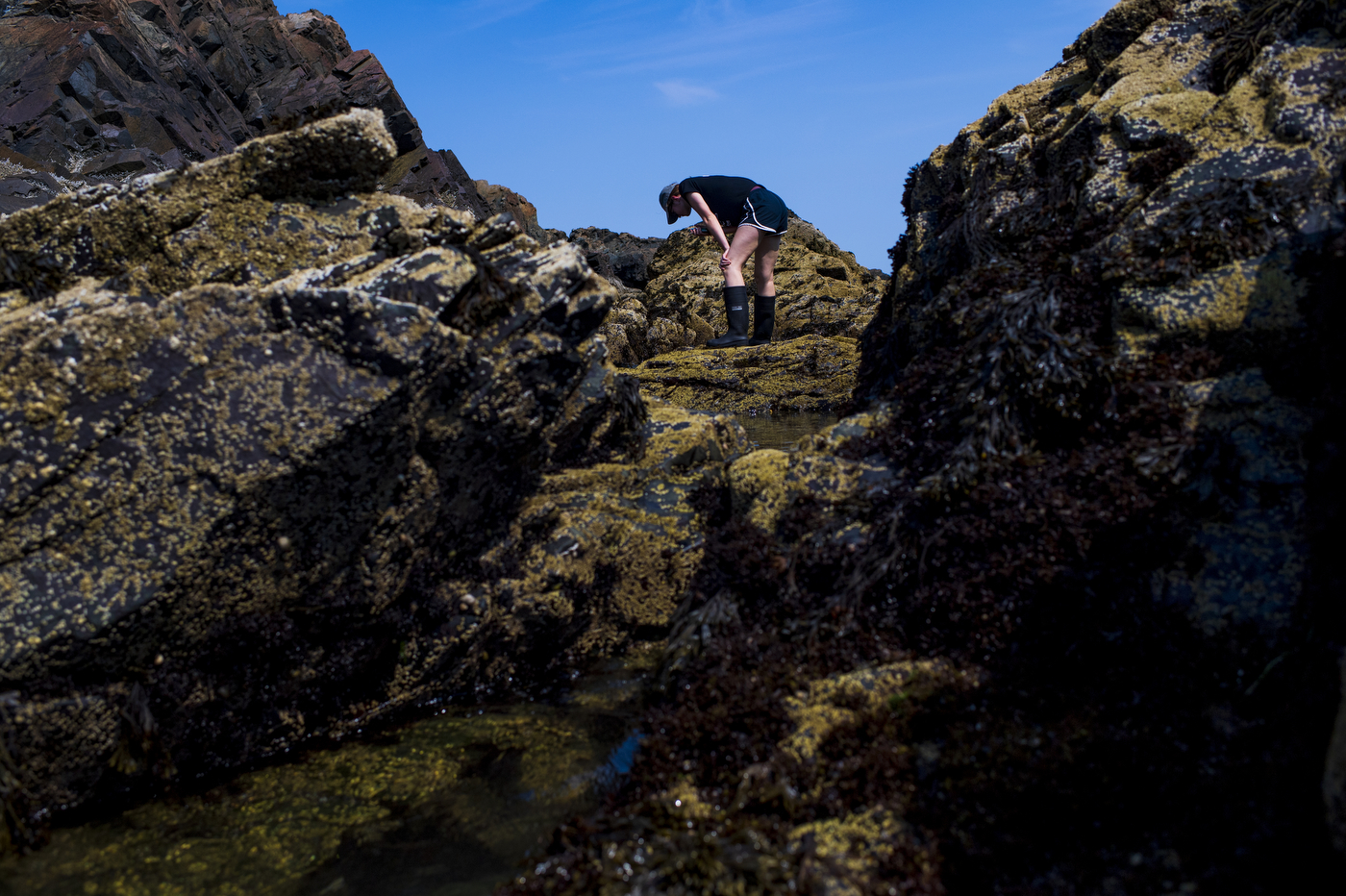Saving shellfish from climate change
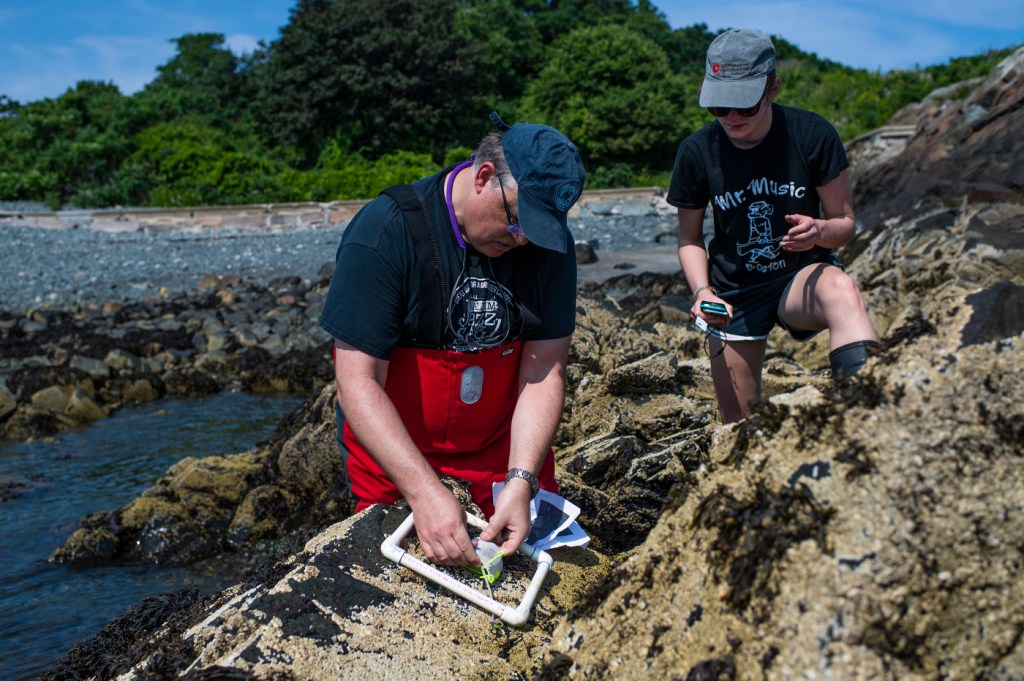
NAHANT, MASS. — Stepping into the gap between the rocks, it’s easy to understand what Brian Helmuth is talking about.
The summer sun beats down, and the rocky shore surrounding Northeastern’s Marine Science Center is toasty. But in this crevice, the marine biologist is partially shaded from the midday rays, and his feet are submerged in the shallow sea water that remains here when the tide goes out. It’s noticeably cooler and more comfortable.
And so are the creatures that Helmuth studies. Mussels fill the corners of the shallow pool, a crab darts over seaweed, snails cling to the submerged rocks, and barnacles mark a distinct high-water line on the walls of the small coastal canyon. It’s a safe haven for the sea creatures, shaded a bit from the heat of the summer sun and kept cool by the water that collects here.
But when Helmuth steps out of this sanctuary, just a few steps from its entrance, he exclaims, “Everything is dead.”

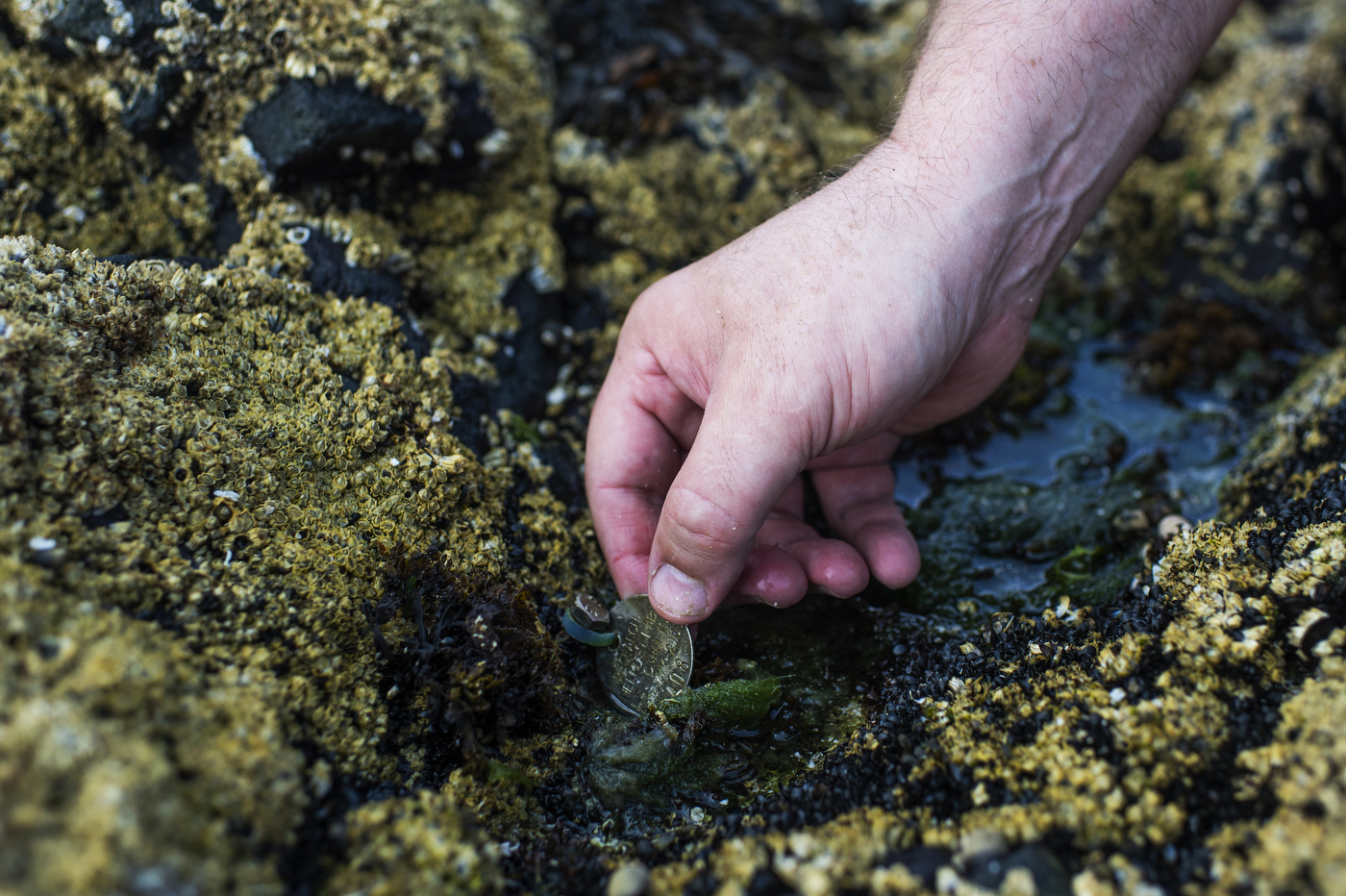
As severe heat waves are becoming more frequent and more intense in many parts of the world, coastal researchers are increasingly finding the cooked carcasses of creatures that make a living in the part of the shore where the tides cyclically expose and quench the landscape, called the intertidal zone. In fact, during the recent record-setting heat waves in the Pacific Northwest region of the United States and western Canada, millions of shellfish got so hot that they cooked right on the rocks where they’d previously thrived.
That’s what Helmuth thinks happened to the barnacles whose eulogy he proclaimed without ceremony outside the cooler, more lively crevice ecosystem in Massachusetts. They probably cooked during a heat wave in 2020, he says, because a few smaller, likely younger barnacles are still alive among the empty shells of the larger ones.
Helmuth, a professor of marine and environmental sciences at Northeastern, is searching for the places—however small—where the coastal creatures don’t cook in their shells when an unprecedented heat wave sweeps through the region. Those areas of refuge (called refugia by scientists) might be a place where these species can survive through a hotter future.

Helmuth snaps close-up photos of specific sections at his study sites at regular intervals to track what creatures live (and die) there as heat waves intensify. Video by Cameron Sleeper/Northeastern University
“We don’t care, per se, that that barnacle lives and that barnacle dies,” Helmuth says, pointing to two individual crustaceans dotting the dark rock. “But what we care about is, ‘Does this site collectively have enough of those refugia that it can still support populations after a heat wave?’”
The idea is that if enough animals make their homes in nooks and crannies that are buffered from intense heat waves, they can reproduce and replenish the populations that don’t survive. If scientists can identify those places, then conservationists can tailor their efforts to protect those places—or even make more such safe havens when building seawalls or other coastal infrastructure.
To figure out what makes for a shellfish refuge, Helmuth takes what he calls a “mussel’s-eye-view” of the world. He and his team have built what they call “robomussels” that have the same shape, size, and color of actual mussels but instead of meat in the middle, these shellfish contain sensors that record the temperatures every 10 minutes. The researchers embed these “robomussels” inside real mussel beds to track the temperatures that the shellfish experience within their shells more accurately than simply taking the temperature of their environment with a handheld thermometer.
Periodically, the researchers go out to check on their fake mussels, pressing a contact-sensor to them to upload the temperature data, charge their batteries, and note whether the real mussels and other creatures living around them are still thriving.
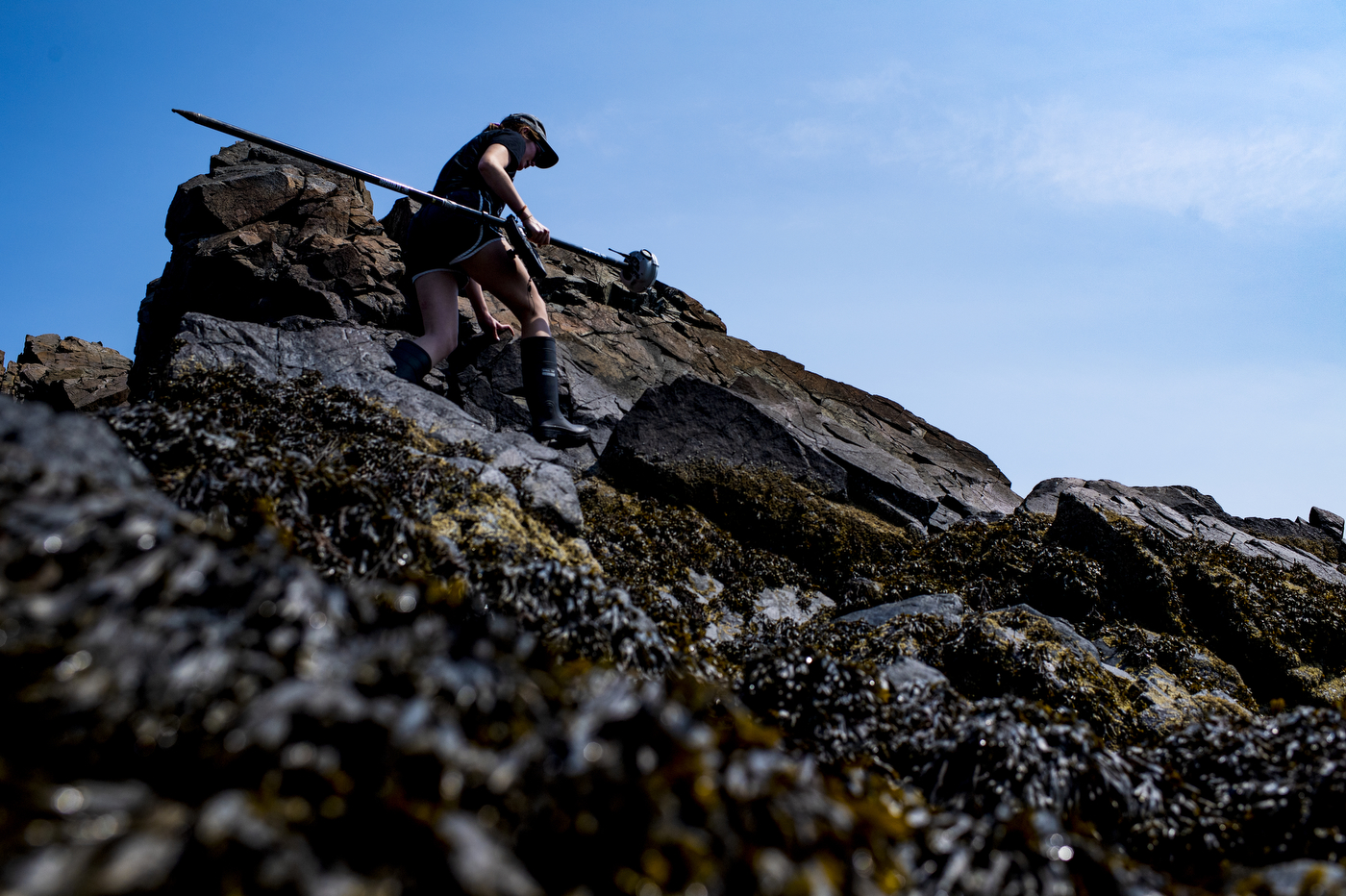
Refugia aren’t always where you might expect, Helmuth says. For example, the mass die-off of shellfish on the West Coast occurred in cooler regions to the north rather than the warmer southern areas. And that’s not because those southerly creatures have evolved to be more resilient to heat waves.
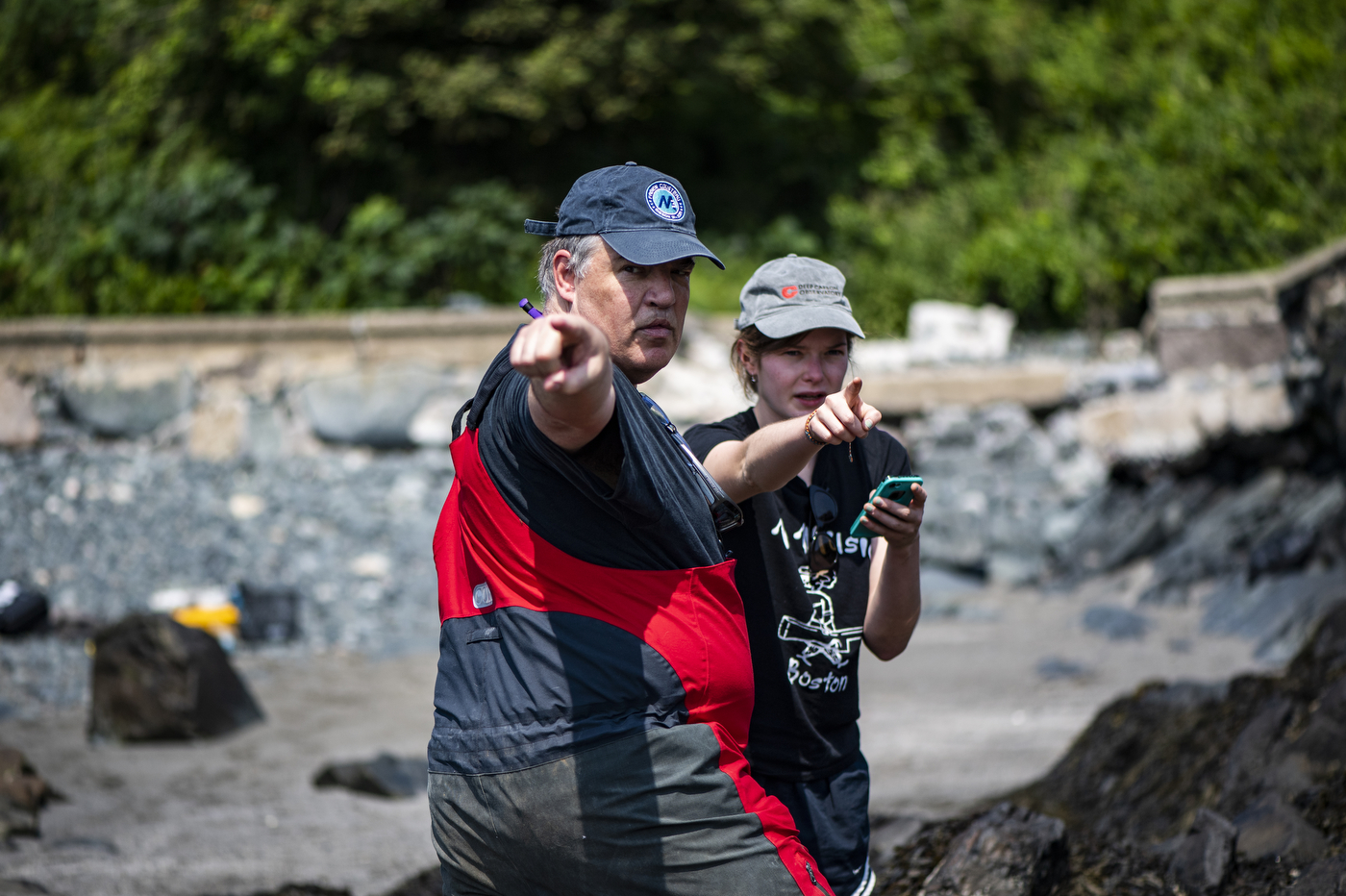
Helmuth and Simonetti discuss the location of the “robomussels” and other temperature loggers used to collect temperature data that the research team has dispersed along the shores of Northeastern’s Nahant campus. Photo by Alyssa Stone/Northeastern University
Rather, Helmuth says, it’s the timing of the high and low tides that protects those shellfish. In the height of summer in Southern California, the low tides occur in the morning and evening—meaning the shellfish are protected under high tide waters during the afternoon, which is the hottest part of the day. But in the Pacific Northwest summer, the low tides occur in the middle of the day, making the creatures vulnerable to the hot noon sun.
In the Gulf of Maine, where Helmuth has study sites from Nahant to northern Maine, the tide timing is less of a factor in the die-offs Helmuth and his colleagues have seen. Rather, he says, it comes down to whether or not the relief of a cool splash can reach a mussel bed that is exposed at low tide on a hot day.
“If you’re an animal sitting on the shore in the sun during low tide and heating from the sun, the only thing that can save you is if a wave rolls in and splashes you,” Helmuth says. “So the riskiest areas are those where there’s a low tide in the middle of the day and no waves splashing on the shore.”

Simonetti takes the temperature of “robomussels” and rock temperature loggers that the Helmuth lab team has dispersed along the shores of Northeastern’s Nahant campus. Video by Cameron Sleeper/Northeastern University
Helmuth’s rock loggers—temperature-recording devices embedded on shoreline rocks—reflect that. The sensors stuck in rocks that have waves lapping over them revealed maximum temperatures ranging from 77 to 100 degrees Fahrenheit when Helmuth and lab manager Sahana Simonetti downloaded their data on a recent July day. But one rock logger up high on a rock that rarely sees any water recorded a whopping 128 degrees Fahrenheit as its maximum temperature.
“I never deliberately set out to be a climate change scientist,” Helmuth says. “But everything I was studying kept dying.
“I’d work on a coral reef and you come back after a heat wave and everything would be dead. And you study mussel beds, and come back, and everything is dead.”’
So now, he hunts for the places where everything isn’t dead.
Helmuth has deployed temperature loggers up and down the coast of the Gulf of Maine and in other parts of the world, too. He’s also working with networks of other coastal researchers around the world to create a map of coastal biodiversity and better understand where refugia might occur across the globe.
In the crevice in Nahant, Helmuth points a thermal camera at the rock exposed during a low tide on a summer day. The sunshine has warmed this spot to about 84 degrees Fahrenheit.
He moves the camera slightly so that it points at a spot just a few inches wide that is shaded by a slight overhang of rock. The temperature reading drops to 75 degrees Fahrenheit.
Outside of the crevice, not far from where Helmuth spots the patch of dead barnacles, the thermal camera reads temperatures over a 100 degrees Fahrenheit.
The air temperature at the time was in the high 70s.
For media inquiries, please contact Marirose Sartoretto at m.sartoretto@northeastern.edu or 617-373-5718.
